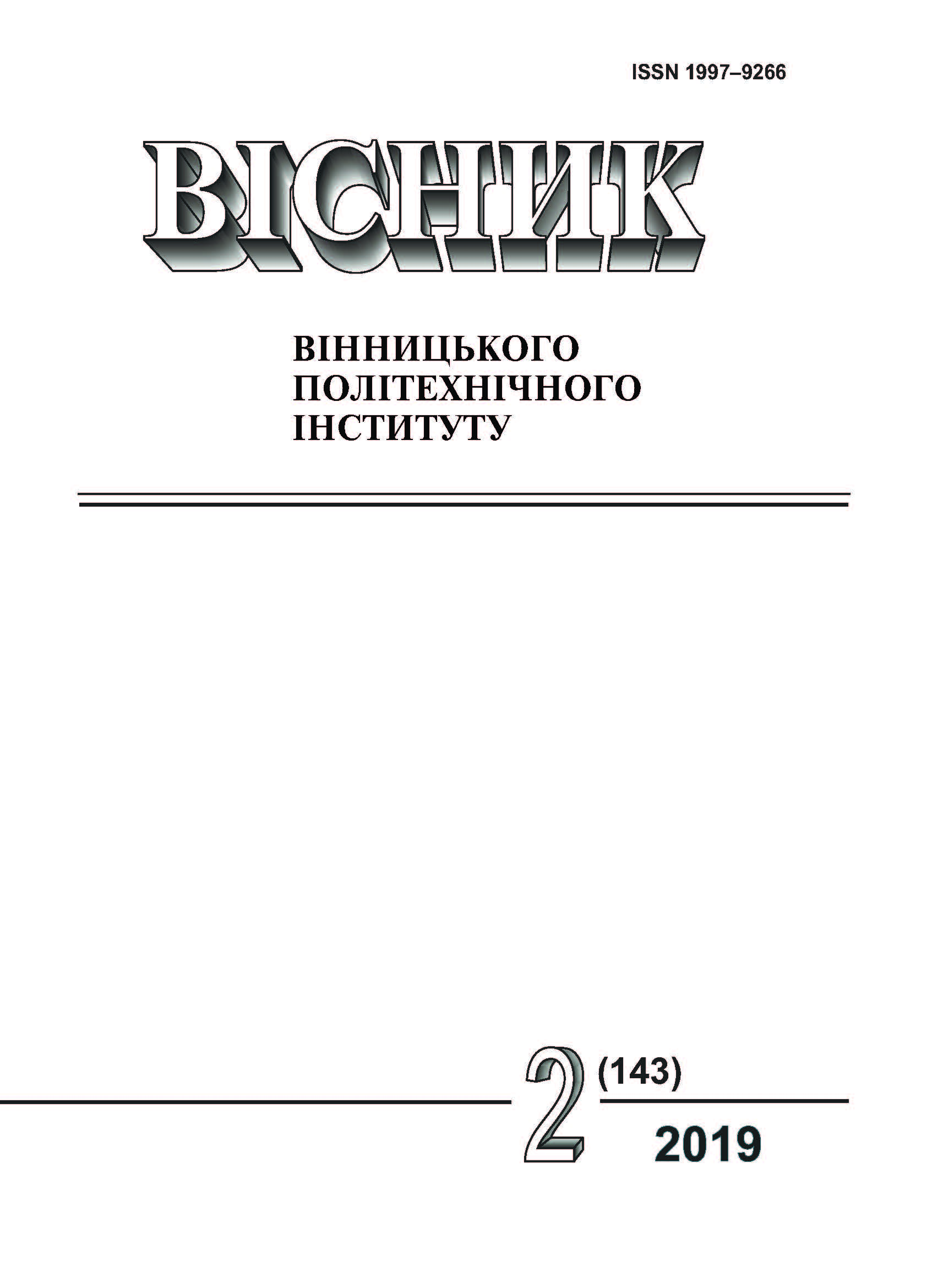Actuality of Use Stem-Steam-Stream Technologies in Engineering and Technical Education for Sustainable Development of Ukraine’s Economy
DOI:
https://doi.org/10.31649/1997-9266-2019-143-2-123-131Keywords:
STEM-education, STEM-STEAM-STREAM-technology, engineering education, competence approach, personal activity approachAbstract
For Ukraine in order to enter the trajectory of rapid and sustainable economic growth, further development of innovation transformations is necessary, in particular, in the field of education, based on modern world trends. The article deals with the actual problem of improving the system of engineering education, namely the new direction — STEM-STEAM-STREAM-education. The purpose of the research is to analyze the essence and content of STEM education, to identify the main problems and contradictions, to designate the main approaches to its development. The systematic, competence and personality-activity approaches became the theoretical and methodological basis of the research. Particular attention was paid to the complexity and versatility of STEM education, as a result of which, to address issues related to the lack of STEM literacy, various programs are developed in terms of type, direction and level of complexity. A brief description of the main approaches to the development of these programs is given; three key factors of education reform in the STEM direction are indicated. It is noted that all the leading countries of the world have published national reports containing recommendations on the implementation of the STEM education reform. Teachers also need to prepare for innovations in the education system and undergo retraining. The examples of the introduction of STEM-technology elements into the educational process for the formation of key professional, creative, social and personal competencies of students of the specialty 122 "Computer Science" of the Donbass State Engineering Academy are presented. The implementation of international educational projects TEMPUS "Development of courses on embedded systems with the implementation of innovative virtual approaches to the integration of science, education and production in Ukraine, Georgia, Armenia" and ERASMUS+ «Innovative Multidisciplinary Curriculum in Artificial Implants for Bio-Engineering BSc/MSc Degrees» [BIOART] helped to master modern learning technologies. These international projects were performed with the involvement of students.
References
Проект розпорядження Кабінету Міністрів України «Про схвалення Стратегії інноваційного розвитку України на період до 2030 року» [Електронний ресурс]. Режим доступу:
Проект Закон України «Про Стратегію сталого розвитку України до 2030 року» [Електронний ресурс]. Режим доступу: http://search.ligazakon.ua/l_doc2.nsf/link1/JH6YF00A.html .
Wikipedia [Електронний ресурс]. Режим доступу: https://uk.wikipedia.org/wiki/STEM .
Інститут модернізації змісту освіти. STEM-освіта: [Електронний ресурс]. Режим доступу: https://imzo.gov.ua/stem-osvita/.
Проект концепції STEM-освіти в Україні [Електронний ресурс]. Режим доступу: http://mk-kor.at.ua/STEM/STEM_2017.pdf .
Лист ІМЗО від 10.10.2018 № 22.1/10-3517.
Daniel Jancarczyk, «STEM as a key to success in the engineering education,» Сучасні інформаційні технології та інноваційні методики навчання: досвід, тенденції, перспектив: Матеріали міжнародної науково-практичної інтернет-конференції, 8-9 листопада 2018 року, Тернопіль, с. 31-32.
V. Voronkova, O. Kyvliuk, V. Nikitenko, and R. Oleksenko, "STEM-education" as a factor in the development of "SMART-society": forming of "STEM-competence," Гуманітарний вісник Запорізької державної інженерної академії, вип. 72, с. 114-124, 2018.
M. Borrego, and C. Henderson, “Increasing the Use of Evidence‐Based Teaching in STEM Higher Education: A Comparison of Eight Change Strategies,” Journal of Engineering Education, vol. 103, pp. 220-252, 2014.
Н. Р. Балик, та Г. П. Шмигер, «Підходи та особливості сучасної STEM-освіти, Науковий журнал Фізико-математична освіта, вип. 2(12), с. 26-30, 2017.
Б. Беседін, та О. Смоляков, «Навчальні технології XXI століття: STEM-освіта,» Гуманізація навчально-виховного процесу, № 1 (87), с. 76-84, 2018.
С. Бабійчук, «STEM-освіта у США: проблеми та перспективи,» Педагогічний часопис Волині, №1 (8), с. 12-17, 2018.
О. Кузьменко, «Сутність та напрямки STEM-освіти,» Наукові записки, вип. 9, Сер. «Проблеми методики фіз.-мат. і технол. освіти. Час», 111 КДПУ, с. 188-190, 2017.
Н. І. Поліхун, І. А. Сліпухіна, та І. С. Чернецький, «Педагогічна технологія STEM як засіб реформування освітньої системи України,» Освіта та розвиток обдарованої особистості, № 3, с. 5-9, 2017.
О. О. Патрикеєва, «Актуальність запровадження STEM-навчання в Україні,» Інформаційний збірник для директора школи та завідуючого дитячим садочком. К.: Освіта України, № 17–18 (41), с. 53-57, 2015.
О. Є. Стрижак, І. А. Сліпухіна, Н. І. Полісун, та І. С. Чтернецький, «STEM-освіта основні дефініції,» Інформаційні технології і засоби навчання, т. 62, № 6, с. 16-32, 2017.
Report to the European commission of the expert group on science education, Science education for Responsible Citizenship. [Online]. Available: http://ec.europa.eu/research/swafs/pdf/pub_science_education/ KI-NA-26-893-EN-N.pdf. Accessed on: July, 12, 2017.
Partnership for 21st century learning. [Online]. Available: www.P21.org. Accessed on: July, 12, 2017.
STEM vs. STEAM vs. STREAM: What’s the Difference?: [Electronic resource]. Accessed: https://www.niche.com/blog/stem-vs-steam-vs-stream/ .
From STEM to STEAM to STREAM: Writing as an Essential Component of Science Education [Electronic resource]. Accessed: https://www.psychologytoday.com/us/blog/imagine/201103/stem-steam-stream-writing-essential-component-science-education .
Trends in learning: STEM, STEAM, STREAM… a battle of acronyms? [Electronic resource]. Accessed: http://www.capstan.be/trends-in-learning-stem-steam-stream-a-battle-of-acronyms/ .
21st Century Skills Map, Partnership for 21st century Skills. [Online]. Available: https://www.actfl.org/sites/default/files/CAEP/AppendixCAlignmentFramework21stCentury.pdf. Accessed on: July, 12, 2017.
Downloads
-
PDF (Українська)
Downloads: 2574
Published
How to Cite
Issue
Section
License
Authors who publish with this journal agree to the following terms:
- Authors retain copyright and grant the journal right of first publication.
- Authors are able to enter into separate, additional contractual arrangements for the non-exclusive distribution of the journal's published version of the work (e.g., post it to an institutional repository or publish it in a book), with an acknowledgment of its initial publication in this journal.
- Authors are permitted and encouraged to post their work online (e.g., in institutional repositories or on their website) prior to and during the submission process, as it can lead to productive exchanges, as well as earlier and greater citation of published work (See The Effect of Open Access).





